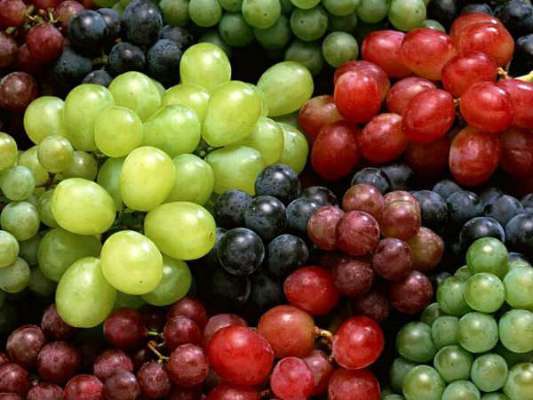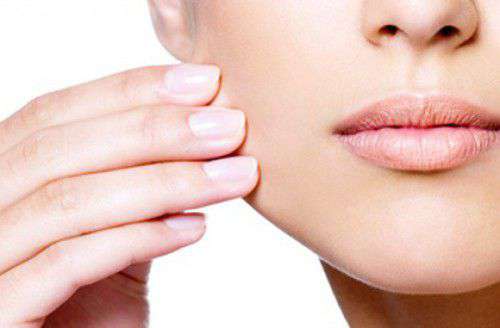
Treat Your Hair To The Goodness Of Grape Mask Today
Did you mother keep telling you to eat a lot of fruits all the time while continuously bragging about its benefits? Well, guess what? She was absolutely right. Fruits do help us a lot - not just in maintaining our health, but they are also beneficial for our skin and...
read more
Common mistakes while washing face
From an early age, it has been taught that washing the face is a necessary step in one's daily skin care regimen. But you may not be doing it right. According to Mukesh Batra, Founder-Chairman Emeritus, Dr Batra's Group of Companies and Gaurang Gupta, Dermatologist,...
read more
E-cigarette additives may impair lung function: Study
According to research, flavouring and additive ingredients used in e-cigarettes may increase inflammation and impair lung function. The researchers found an increase in markers of inflammation, mucus production and altered lung function in a group of mice after being...
read more
Obesity in your 20s linked to reduced life expectancy
If you are obese or overweight in your 20s and 30s, expect to lose up to 10 years in life expectancy, researchers have warned. The findings showed that men and women who are obese in their 20s will lose up to eight and six years respectively in their lives. In...
read more
Seaweed – Is It Really Good For Your Hair?
When people say Japanese women are beautiful and have strong and silky hair, you instantly look up to Google to know what it is that makes their hair so perfect and flawless? Well, a lot of things actually. And, one of them is seaweed. Japanese women have always been...
read more
Three Important Tips on How to Lead a Long and Healthy Life Event with Type 2 Diabetes
Type 2 diabetes can be a deadly disease if you do not recognize it and manage it properly. However, even though it is such a serious disease, it does not mean that you cannot do anything to minimize the risk factors, improve your health, and increase your longevity....
read more
Too much sugar along with caffeine in energy drinks makes children more violent
Scientists found a strong and consistent link between higher consumption of sugar and tendency of children to get into fights. A lot of sugar is consumed by people in different parts of the world even as too much of it isn't considered great for health. But apart from...
read moreSeed oils better for lowering cholesterol: Study
Oils obtained from seeds such as sunflower, rapeseed, safflower and flaxseed could be more beneficial in lowering bad cholesterol, known to damage arteries, and increase the risk of heart diseases and strokes, new research claims. Many of the previous studies have...
read more
Here’s what you should eat to beat arthritis
Recent scientific studies suggest that there is an intricate relationship between what a person eats and how it can affect their joint health. From anti-inflammatory fruits and vegetables to immune-boosting bacteria, there is a range of changes that one can make to...
read more
Ways to sleep well during festive season
The festive season is just a couple of days away, and it will bring along a lot of travel and parties, which can disturb sleep pattern. Ensure you get your dose of sound sleep. Ankit Garg, CEO and Co-founder, Wakefit.co and Gowri Kulkarni, Head of Medical operations,...
read moreHumans can read each other’s emotions from tiny changes in facial colour: Study
Humans can read each other’s emotions from surprisingly tiny changes in facial colour, according to a study.
Researchers at The Ohio State University in the US found that people are able to identify other people’s feelings up to 75 per cent of the time – based solely on subtle shifts in blood flow colour around the nose, eyebrows, cheeks or chin.
The study, published in the journal PNAS, demonstrates a never-before-documented connection between the central nervous system and emotional expression in the face.
It also enabled researchers to construct computer algorithms that correctly recognise human emotion via face colour up to 90 per cent of the time.
“We identified patterns of facial colouring that are unique to every emotion we studied,” said Aleix Martinez, a professor at The Ohio State University.
“We believe these colour patterns are due to subtle changes in blood flow or blood composition triggered by the central nervous system.
“Not only do we perceive these changes in facial colour, but we use them to correctly identify how other people are feeling, whether we do it consciously or not,” said Martinez.
The researchers hope they will enable future forms of artificial intelligence to recognise and emulate human emotions.
They first took hundreds of pictures of facial expressions and separated the images into different colour channels that correspond to how human eyes see colour – a red-green channel and a blue-yellow channel.
Using computer analysis, they found that emotions like “happy” or “sad” formed unique colour patterns.
Regardless of gender, ethnicity or overall skin tone, everybody displayed similar patterns when expressing the same emotion, the researchers said.
To test whether colours alone could convey emotions – without smiles or frowns to go along with them – they superimposed the different emotional colour patterns on pictures of faces with neutral expressions.
They showed the neutral faces to 20 study participants and asked them to guess how the person in the picture was feeling, choosing from a list of 18 emotions.
The emotions included basic ones like “happy” and “sad” as well as more complex ones such as “sadly angry” or “happily surprised,” researchers said.
Facial colour can broadcast our feelings: Study
Humans can read each other’s emotions from surprisingly tiny changes in facial colour, according to a study.
Researchers at The Ohio State University in the US found that people are able to identify other people’s feelings up to 75 percent of the time – based solely on subtle shifts in blood flow colour around the nose, eyebrows, cheeks or chin.
The study, published in the journal PNAS, demonstrates a never-before-documented connection between the central nervous system and emotional expression in the face.
It also enabled researchers to construct computer algorithms that correctly recognise human emotion via face colour up to 90 percent of the time.
“We identified patterns of facial colouring that are unique to every emotion we studied,” said Aleix Martinez, a professor at The Ohio State University.
“We believe these colour patterns are due to subtle changes in blood flow or blood composition triggered by the central nervous system.
“Not only do we perceive these changes in facial colour, but we use them to correctly identify how other people are feeling, whether we do it consciously or not,” said Martinez.
The researchers hope they will enable future forms of artificial intelligence to recognise and emulate human emotions.
They first took hundreds of pictures of facial expressions and separated the images into different colour channels that correspond to how human eyes see colour – a red-green channel and a blue-yellow channel.
Using computer analysis, they found that emotions like “happy” or “sad” formed unique colour patterns.
Regardless of gender, ethnicity or overall skin tone, everybody displayed similar patterns when expressing the same emotion, the researchers said.
To test whether colours alone could convey emotions – without smiles or frowns to go along with them – they superimposed the different emotional colour patterns on pictures of faces with neutral expressions.
They showed the neutral faces to 20 study participants and asked them to guess how the person in the picture was feeling, choosing from a list of 18 emotions.
The emotions included basic ones like “happy” and “sad” as well as more complex ones such as “sadly angry” or “happily surprised,” researchers said.
The real reason why GIFs are no longer available on Snapchat, Instagram
Snapchat and Instagram added Giphy integration only recently. Instagram introduced the feature in January while Snapchat followed the suit in February. One offensive GIF forced two major social networking platforms, Snapchat and Instagram, to remove Giphy integration from their respective platforms. The move seems to be temporary, but affects millions…








